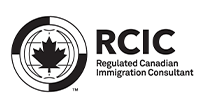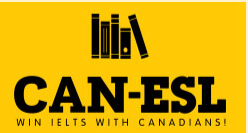Canada’s Express Entry Launches New Pathway for Educators: A Golden Opportunity for Teachers, Assistants, and Education Professionals
Canada has once again expanded its immigration vision—this time, focusing on the vital education sector. In a major move to support the country’s growing need for skilled education professionals, Immigration, Refugees and Citizenship Canada (IRCC) has introduced a new category-based Express Entry draw for those with work experience in the education field.
This is a game-changing opportunity for qualified individuals such as teachers, early childhood educators, educational assistants, and other education support roles—whether you are already in Canada or living abroad and planning to immigrate.
In this article, we explore everything you need to know about this exciting development, how it affects your eligibility, and how Guide Me Immigration can help you make your Canadian dream a reality.
🧭 What is the Express Entry Education Category Draw?
Canada’s Express Entry system is the flagship immigration pathway for skilled workers. Until recently, it operated under three main economic programs:
-
Federal Skilled Worker Program (FSWP)
-
Canadian Experience Class (CEC)
-
Federal Skilled Trades Program (FSTP)
However, in 2023, the IRCC began introducing category-based selection draws, focusing on specific sectors of the labor market, including healthcare, STEM, agriculture, transport, and French-speaking proficiency.
In February 2024, the Education category was officially added to this targeted approach.
The first Education category draw was held shortly after, with 1,000 Invitations to Apply (ITAs) issued to qualified candidates and a CRS cut-off score of 479. This is significant, as it reflects IRCC’s focus on filling labor shortages in Canada’s schools and childcare centers.
🧑🏫 Who Is Eligible for the Education Draw?
To qualify under the new category, you must meet several key requirements. The most important one is having at least 6 months of full-time (or equivalent part-time) work experience in an eligible education occupation within the last 3 years.
Full-time work = minimum 30 hours per week.
✅ Eligible Occupations Include:
-
Early Childhood Educators and Assistants (NOC 42202)
-
Elementary and Secondary School Teacher Assistants (NOC 43100)
-
College and Other Vocational Instructors (NOC 41210)
-
Secondary School Teachers (NOC 41220)
-
Elementary School and Kindergarten Teachers (NOC 41221)
If your work experience matches one of these roles and you’ve entered the Express Entry pool, you may be selected under this new targeted category—even with a CRS score lower than general draw thresholds.
🔍 CRS Score Explained: Why the Education Category Helps You
The Comprehensive Ranking System (CRS) is the core points-based method used in Express Entry to rank candidates. Points are awarded for age, education, language ability, work experience, adaptability, and other factors.
Education draws often have lower thresholds than general draws. Why?
Because the selection is occupation-specific. You’re no longer competing with engineers, healthcare professionals, or IT specialists. This narrower competition increases your chances if you’re in the right field.
Let’s break down what that means with some examples.
🧾 Example Profiles That Would Qualify
🎓 Christina Navarro, 26, from the Philippines
-
Canadian diploma + foreign bachelor’s in education
-
2 years of Canadian experience as an educational assistant
-
CLB 9 in English
-
No foreign work experience
CRS Score: 480 → Eligible in latest Education draw!
👨🏫 Akram Shah, 29, from Pakistan
-
Master’s in Education
-
3 years of foreign experience as a high school teacher
-
CLB 10 in English
-
No Canadian experience
CRS Score: 481 → Qualified despite no Canadian experience!
🧑🤝🧑 Simone & Anthony Brown, couple from Jamaica
-
Simone: Canadian diploma + foreign degree, CLB 9
-
Anthony: Master’s, CLB 10, 1 year Canadian experience
-
3 years of Simone’s foreign experience
CRS Score: 485 (with spousal boost) → Eligible and strong candidate!
💡 Why This Draw Is a Game-Changer
Here’s why this new category draw is such a strategic move—for both applicants and Canada:
1️⃣ Addresses Labor Shortages
Canada has a growing need for educators, especially in early childhood, special needs, and remote communities. By targeting these roles, the IRCC supports both economic growth and community development.
2️⃣ Helps PGWP Holders and International Students
Many international graduates with education diplomas work in school systems as assistants or support workers. This draw rewards that Canadian experience with extra CRS points—boosting chances for PR.
3️⃣ Gives Foreign-Trained Educators a Real Chance
Before this, foreign-trained teachers often struggled due to licensing hurdles or lack of Canadian work experience. Now, with focused draws and lower CRS cut-offs, their chances improve dramatically.
📘 Licensing Considerations for Teachers
While this draw opens doors, it’s important to understand that teaching is a regulated profession in Canada. You may still need to get certified to work as a licensed teacher in your chosen province.
Each province has its own teacher certification board:
-
Ontario College of Teachers (OCT)
-
Teacher Regulation Branch of BC
-
Saskatchewan Professional Teachers Regulatory Board
-
And more
However, roles like education assistants and early childhood educators often have more flexible pathways and quicker access to employment.
📋 How to Apply Under This New Category
Step 1: Check Your NOC Code
Confirm that your current or previous job fits under one of the eligible NOC codes.
Step 2: Create an Express Entry Profile
If you haven’t already, submit your profile through IRCC’s Express Entry system. Make sure you include your education, work experience, and language test results.
Step 3: Improve Your CRS Score
Consider improving your English/French test scores, completing more education, or gaining additional Canadian experience to raise your score.
Step 4: Wait for a Category-Based Draw
Once your profile is in the pool and meets the category requirements, you may receive an Invitation to Apply (ITA) during an Education-focused draw.
Step 5: Submit Your PR Application
After receiving an ITA, you’ll have 60 days to submit a complete application for permanent residence.
Why Choose Guide Me Immigration?
At Guide Me Immigration, we specialize in helping international students, skilled workers, and professionals successfully navigate the Canadian immigration system. Whether you’re already in Canada or applying from abroad, our team can:
✅ Evaluate your Express Entry eligibility
✅ Help calculate and optimize your CRS score
✅ Guide you on work experience classification (NOC codes)
✅ Assist with provincial certification guidance
✅ Ensure accurate, complete, and timely PR application submissions
Our immigration experts understand the unique challenges education professionals face and can provide the strategic support you need to move forward with confidence.
🌍 Visit Us or Contact Today!
📍 Saskatoon: 535 20th St W, Unit-C, Saskatoon, SK S7M 0X6
📍 Regina: Unit 170 – 2410 Dewdney Ave, Regina, SK S4R 1H6
📍 Dhaka: Apt-2D, H-396, R-6 Avenue 3, Mirpur DOHS, Dhaka 1216
🌐 Website: www.guidemeimmigration.com
📞 Phone: +1 (306) 700 7440
✉ Email: info@guidemeimmigration.com
🎯 Final Thoughts
This new Education category draw is more than just an immigration pathway—it’s an opportunity for educators around the world to build a secure, meaningful life in Canada.
If you’ve dedicated your life to supporting students, empowering learners, and helping communities thrive, Canada needs your skills. And now, for the first time, the Express Entry system is truly opening its doors to welcome you.
Whether you’re a teacher overseas or an education assistant already working in Canada, this is your moment. Let’s make it happen—together.
Other link:http://go-get.ca







